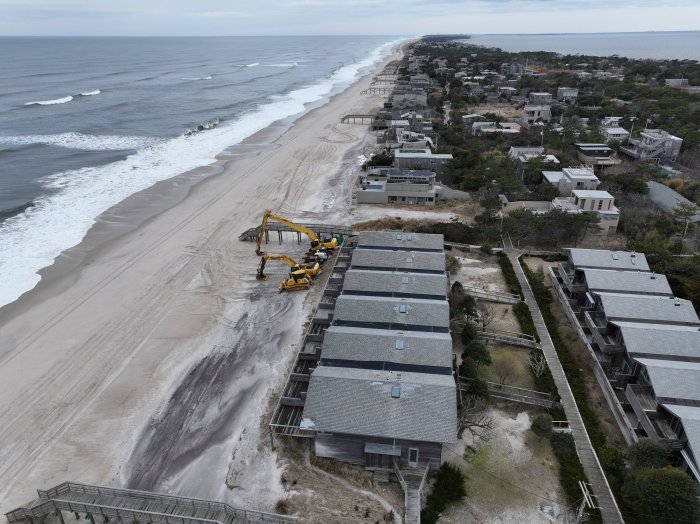The Fire Island Wastewater Management study was presented to the Suffolk County Legislature’s Environmental Parks & Agricultural Committee. on Monday, June 17, at the Suffolk County Legislative Offices, in Riverhead.
This six-year-long study and survey was a collaboration between the Citizens Campaign for the Environment (CCE) and Cameron Engineering. All collected data from their findings are part of a larger goal to correct and improve wastewater disposal on Fire Island.
It is no secret that Fire Island is one of the largest attractions on Long Island. It sees millions of visitors each year. The 17 communities nestled on the barrier island have approximately 4,000 homes combined.
During the summer peak season from Kismet to Watch Hill, people enjoy the beautiful weather and beaches and small businesses will earn their living. Yet where all the wastewater goes is a mere afterthought.
Fire Island only has one waste treatment plant, and it is located in the Village of Ocean Beach.
“The balance of the homes and businesses on Fire Island use onsite wastewater treatment systems (OWTS) comprised of cesspools, septic tanks, leaching pools, and Innovative Alternative (I/A) systems,” according to the CCE’s press release. “Due to the high groundwater, their effectiveness in removing pollutants is marginal.”
Those pollutants are causing harmful effects on the surrounding water. It promotes the growth of harmful algal blooms, water quality impairments, and the loss of fisheries in the Great South Bay, and Shinnecock Bay. That is why back in 2018 the CCE sprang into action. Legislator Steven J. Flotteron secured a grant for the study. Cameron Engineering was retained to help with their survey. Together, they’ve come up with proposed short and long-term solution plans.
The first plan is to expand the Ocean Beach Waste Water Treatment Facility (WWTF), which has New York State Department of Environmental Conservation approval to treat and discharge 500,000 gallons of wastewater daily. Much more would be required to address the needs of the island’s entirety, but improvements would still be significant. According to the studies data, the best communities to connect to the WWTF are, “Seaview and Ocean Bay Park located to the east, and Summer Club, and communities of Corneille Estates, Robbins Rest, and Atlantique to the west of Ocean Beach.” This would grant expansion in both directions and allow for the treatment of an additional 293,000 gallons of wastewater a day.
The more long-term solution and plan proposed is to utilize the WWTF again, but instead turn it into a “regional pump station with a force main,” per the report. It would collect the wastewater and then send it underneath the Great South Bay on a 3.5-mile run from the WWTF to Hecksher State Park in Great River. From there, the sewage would be sent to Suffolk County’s largest treatment plant at Bergen Point, in West Babylon. It would be directional drilling for the piping, which would cause no harm to the surrounding environment. This would require the Suffolk County Department of Public Works (SCDPW) to take over the project. The Village of Ocean Beach has reportedly expressed the desire for the SCDPW to take over and operate the WWTF already.
Outside of those already listed options, the CCE has findings have also sparked numerous alternative solution ideas. Those include transporting wastewater by barge to the mainland treatment plants, composting toilets, incinerator toilets, and mobile restroom units. However, there are numerous obstacles persist as well.
“The challenges begin with limited access to Fire Island from the mainland involving ferries and certain permits from FINS (Fire Island National Seashore) and include challenges within particular communities including varying dock access for community freight and passengers, unique boardwalk and roadway construction and design, narrow streets, and the need for smaller transport vehicles and specialized pump-out vehicles,” according to the CCE.
Whichever option is ultimately decided upon, the price tag will be significant. However, to do nothing would certainly cost much more.



























